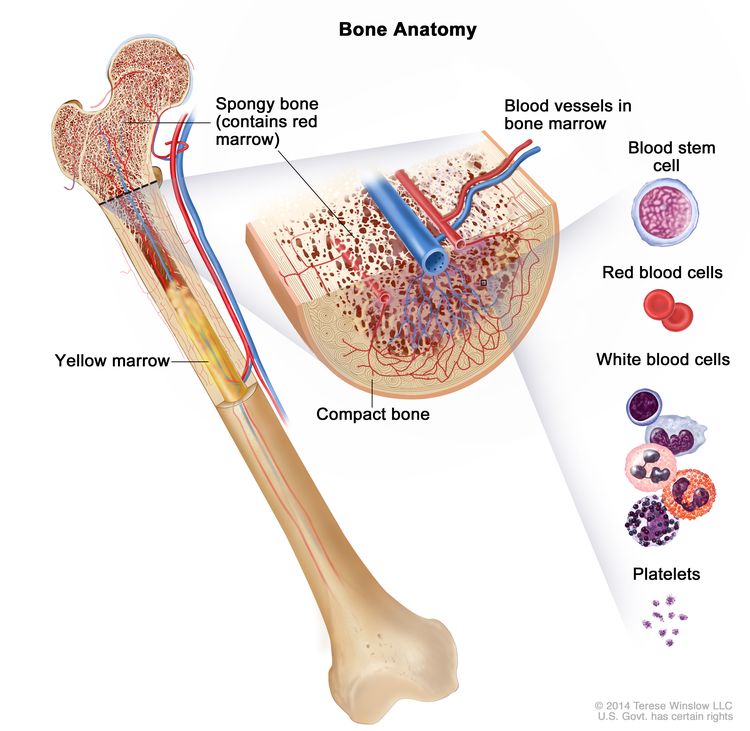Progressive chronic lymphocytic leukemia (CLL) is a type of cancer that affects the blood and bone marrow, leading to the abnormal growth of white blood cells known as lymphocytes. As CLL progresses, these cells multiply uncontrollably and impair the body’s immune system. This article will explore the key aspects of progressive chronic lymphocytic leukemia, including its causes, symptoms, diagnosis, stages, and treatment options.

What is Progressive Chronic Lymphocytic Leukemia (CLL)?
Chronic lymphocytic leukemia is a slow-growing form of leukemia that primarily affects older adults. The disease originates in the bone marrow, where blood cells are produced, and primarily affects lymphocytes, a type of white blood cell. Over time, as the lymphocytes accumulate, they can infiltrate other organs and tissues, leading to various complications.
Progressive CLL refers to the phase where the disease worsens despite treatment, and patients may experience increased symptoms and complications. Unlike its more acute counterparts, CLL progresses at a slower pace, but it can still be fatal if not properly managed.
Causes and Risk Factors of Progressive CLL
The exact cause of CLL is not fully understood, but several factors are believed to contribute to its development. These include genetic mutations, environmental exposures, and family history.
1. Genetic Factors
CLL is associated with specific genetic mutations that can cause the uncontrolled growth of lymphocytes. These mutations often occur in the DNA of B-cells, a subtype of lymphocytes. The most common genetic abnormalities in CLL include deletions of chromosomes 13q, 11q, and 17p, as well as mutations in the TP53 gene, which is associated with tumor suppression.
2. Age and Gender
CLL predominantly affects older adults, with the majority of cases occurring in individuals over the age of 60. Men are also more likely to develop CLL than women.
3. Family History
Having a close relative with CLL increases the risk of developing the disease. Although CLL is not generally considered hereditary, familial clustering is observed in some cases, suggesting a potential genetic predisposition.
4. Environmental Factors
Certain environmental exposures, such as pesticides, industrial chemicals, and prolonged exposure to radiation, have been linked to an increased risk of CLL. However, these factors alone are not sufficient to cause the disease but may contribute to its development in combination with genetic factors.
Symptoms of Progressive Chronic Lymphocytic Leukemia
The symptoms of progressive CLL can vary widely depending on the stage of the disease and the degree of progression. Early stages of CLL often have no noticeable symptoms, but as the disease advances, various signs may appear.
1. Lymphadenopathy (Swollen Lymph Nodes)
One of the most common symptoms of CLL is the enlargement of lymph nodes, particularly those in the neck, armpits, and groin. These swollen lymph nodes may be painless, but in advanced stages, they can become tender and cause discomfort.
2. Fatigue
Patients with CLL often experience significant fatigue, which can be debilitating and affect daily activities. This fatigue is often the result of anemia, a condition where there are not enough red blood cells to carry oxygen throughout the body.
3. Unexplained Weight Loss
Weight loss without an apparent cause can occur in advanced stages of CLL, often due to increased metabolic demands from the cancer and the body’s efforts to fight the disease.
4. Frequent Infections
As the disease weakens the immune system, individuals with CLL may become more susceptible to infections. This is because the cancerous lymphocytes cannot effectively fight off pathogens, leading to recurrent bacterial or viral infections.
5. Night Sweats and Fever
Patients with advanced CLL may experience unexplained fever and night sweats. These symptoms can be indicative of the disease’s progression and may be accompanied by chills and general malaise.
6. Bleeding and Easy Bruising
CLL can cause a decrease in platelet count, leading to easy bruising and an increased tendency to bleed, even from minor cuts.
Diagnosis of Progressive Chronic Lymphocytic Leukemia
The diagnosis of CLL typically begins with a thorough medical history, physical examination, and blood tests. Since CLL progresses slowly, it may not be diagnosed until it has reached an advanced stage. The following diagnostic methods are commonly used:
1. Complete Blood Count (CBC)
A CBC is one of the first tests performed to diagnose CLL. The test can reveal an elevated white blood cell count, which is a hallmark of the disease. CLL typically shows an increased number of lymphocytes, particularly small, mature-looking ones.
2. Flow Cytometry
Flow cytometry is a technique used to examine the characteristics of cells in a blood or bone marrow sample. It helps confirm the diagnosis of CLL by detecting abnormal B-cells and their surface markers.
3. Bone Marrow Biopsy
In some cases, a bone marrow biopsy may be performed to assess the extent of leukemia in the marrow. This test is especially useful for determining the stage of the disease and for identifying genetic abnormalities.
4. Genetic Testing
Genetic testing may be conducted to identify mutations in the TP53 gene or chromosomal abnormalities that could influence the course of the disease and guide treatment options.
5. Imaging Tests
CT scans or ultrasounds may be used to assess the size of lymph nodes or to check for organ involvement. Imaging helps to determine the spread of the disease and whether other organs are affected.
Stages of Progressive CLL
The progression of CLL is typically divided into different stages based on the extent of lymph node involvement, organ enlargement, and blood abnormalities. These stages help determine the prognosis and guide treatment decisions.
1. Early Stage (Rai Stage 0)
In this stage, CLL may be asymptomatic. The diagnosis is often made through routine blood tests, which show an elevated lymphocyte count. There is no significant enlargement of lymph nodes or organs at this point.
2. Intermediate Stages (Rai Stage I & II)
As the disease progresses, patients may experience lymphadenopathy and splenomegaly (enlargement of the spleen). Symptoms such as fatigue and mild infections may also begin to appear. Treatment may not be immediately necessary unless the symptoms become more pronounced.
3. Advanced Stages (Rai Stage III & IV)
In advanced stages of CLL, patients may experience significant symptoms, including weight loss, severe fatigue, infections, and bleeding. Organ involvement becomes more pronounced, and the prognosis can be poorer at this stage.
Treatment Options for Progressive Chronic Lymphocytic Leukemia
The treatment of progressive CLL depends on the stage of the disease, the symptoms, and the patient’s overall health. Early-stage CLL may not require immediate treatment, while advanced stages may necessitate more aggressive therapies.
1. Chemotherapy
Chemotherapy remains one of the standard treatments for progressive CLL. Drugs such as fludarabine, cyclophosphamide, and chlorambucil are commonly used to kill cancerous lymphocytes. Chemotherapy can be effective, but it may also cause side effects, including nausea, hair loss, and immunosuppression.
2. Targeted Therapy
Targeted therapies focus on specific molecules involved in the growth and survival of cancer cells. Drugs such as ibrutinib (a Bruton’s tyrosine kinase inhibitor) and venetoclax (a BCL-2 inhibitor) have shown efficacy in treating CLL by blocking the signals that allow cancer cells to proliferate.
3. Immunotherapy
Immunotherapy uses the body’s immune system to fight cancer. Monoclonal antibodies, such as rituximab, can be used to target cancerous lymphocytes and help the immune system recognize and destroy them.
4. Stem Cell Transplant
In rare cases, patients with advanced CLL may undergo a stem cell transplant. This procedure involves replacing the damaged bone marrow with healthy stem cells from a donor. It is typically reserved for patients who do not respond to other treatments.
5. Watchful Waiting
In early-stage CLL with minimal symptoms, a strategy of watchful waiting may be employed. This involves regular monitoring of the patient’s condition without immediate treatment until symptoms worsen.
Prognosis and Survival Rates
The prognosis for individuals with progressive CLL varies depending on several factors, including the stage of the disease, the presence of genetic mutations, and the patient’s response to treatment. In general, CLL is a slow-growing disease, and many patients can live for years with manageable symptoms. However, once the disease progresses to more advanced stages, the prognosis becomes more guarded.
Progressive chronic lymphocytic leukemia is a complex disease that requires careful diagnosis, staging, and treatment. While it can be challenging, advances in targeted therapies and immunotherapies have improved the outlook for many patients. By understanding the causes, symptoms, diagnostic methods, and treatment options, individuals with CLL can work with their healthcare team to manage the disease effectively and improve their quality of life.

